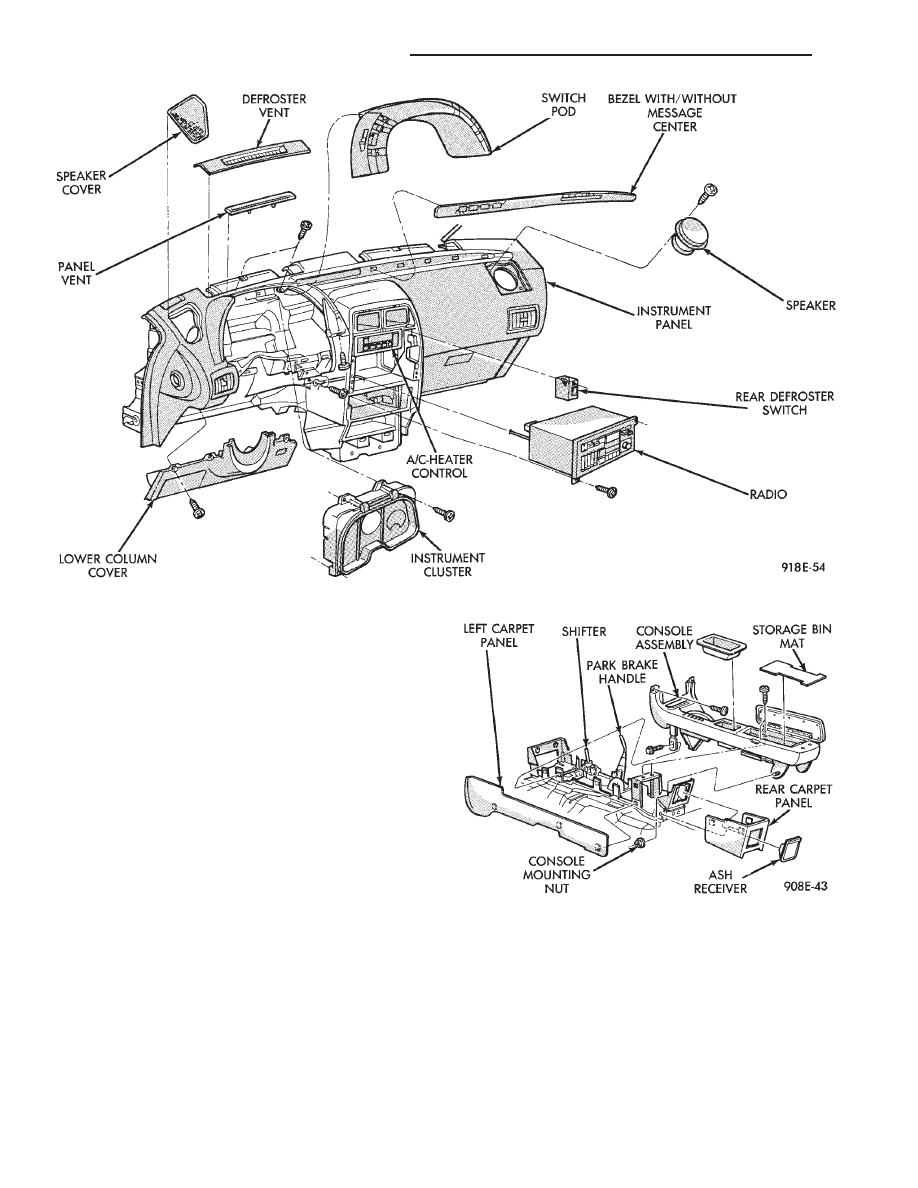Chrysler Le Baron, Dodge Dynasty, Plymouth Acclaim. Manual - part 311

(7) Unscrew lighter receptacle shell from element
and remove.
(8) For installation reverse above procedures.
INSTRUMENT PANEL ROLL DOWN PROCEDURE
CAUTION: Disconnect negative battery cable, in en-
gine
compartment,
before
servicing
instrument
panel.
(1) Remove instrument panel center bezel (Fig.
31).
(2) Remove upper and lower steering column cov-
ers.
(3) Remove the left under panel silencer.
(4) Set parking brake.
(5) Remove console side carpet panels (Fig. 32).
(6) Remove console, refer to Group 23, Body.
(7) Remove transmission range clip and cable loop
end from post on gear shifter (Fig. 33 and 34).
(8) Remove adjuster from tab on gear shifter
bracket. By pushing in locking knob on adjuster, and
sliding the adjuster off the tab on the gear shifter
bracket.
(a) For installation: insert transmission range
cable into adjuster and line up with the end of the
adjuster.
(b) The transmission range indicator must be ad-
justed with the gear shifter in low position.
(c) Check the gear selector indicator for proper
alignment.
(d) Attach transmission range clip to the ad-
juster to secure cable.
(9) Remove two screws and slide Air Bag Diagnos-
tic Module out of right side of instrument panel cen-
ter stack area, then disconnect wiring.
(10) Remove screw from instrument panel dimmer
module at left of steering column and lower module.
Fig. 31 Instrument Panel Components
Fig. 32 Center Console
8E - 56
INSTRUMENT PANEL AND GAUGES
Ä